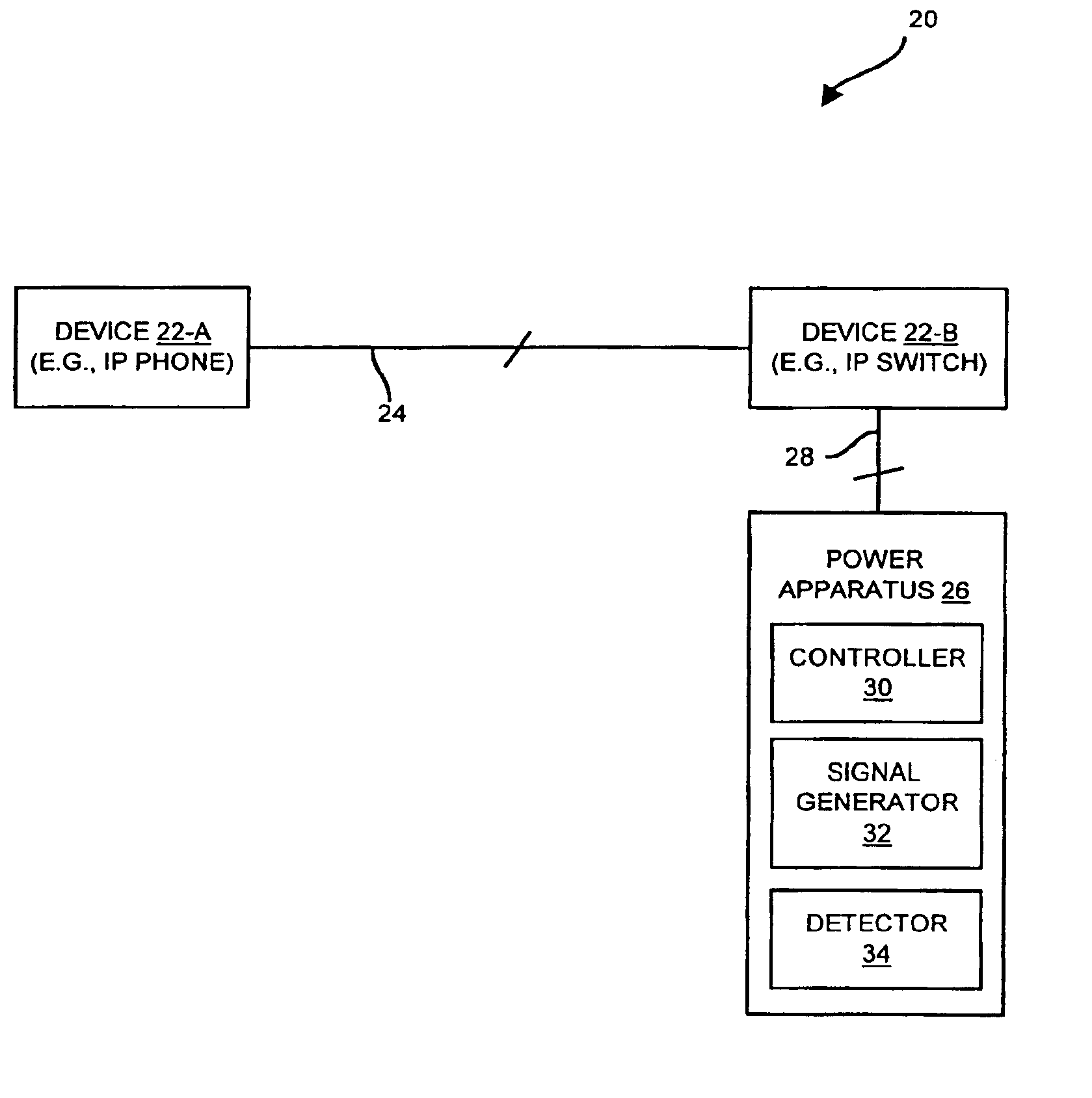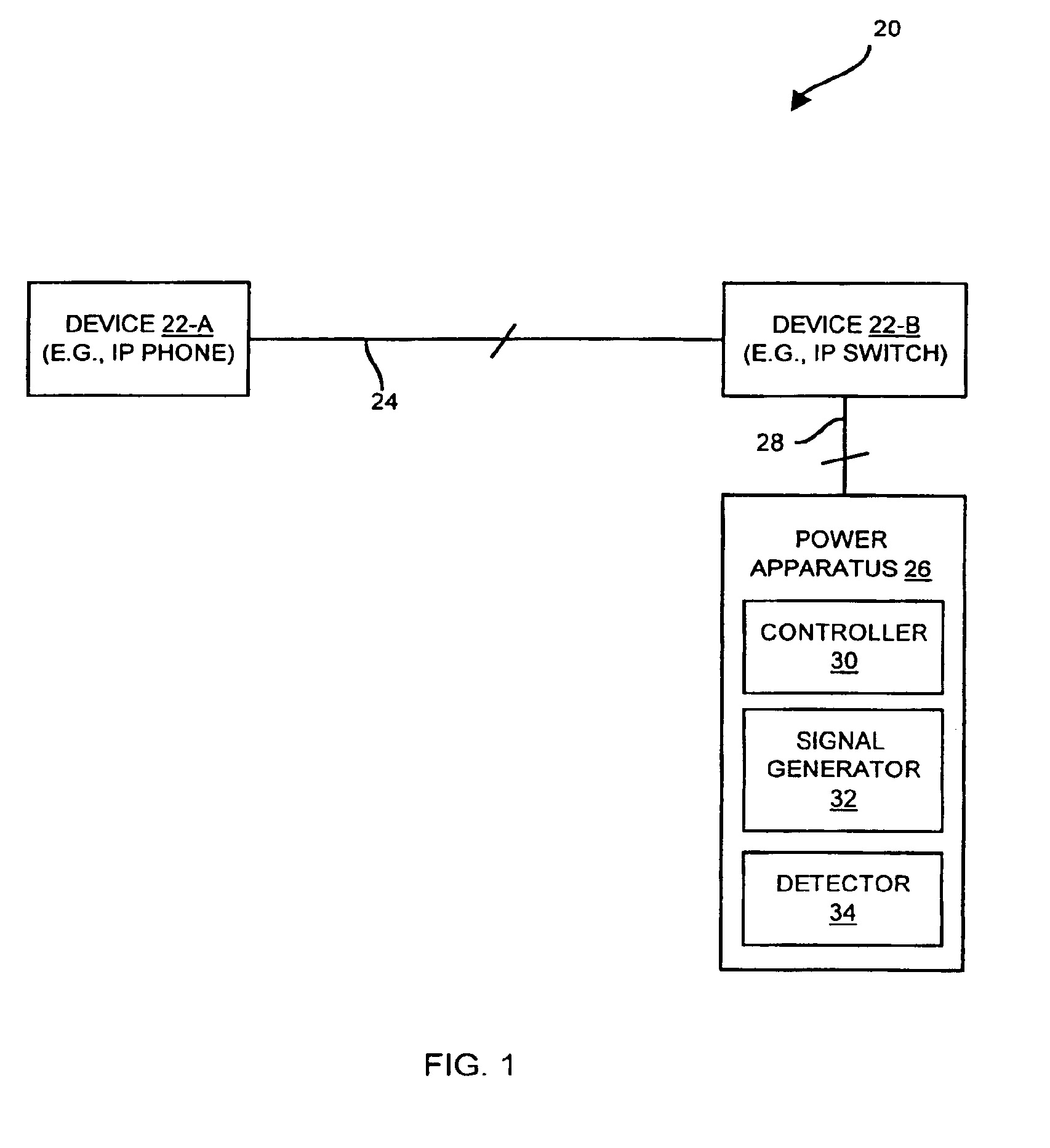Remotely powerable device with powerability indicator for selectively indicating a backward wired device condition and a remotely powerable device condition
- Summary
- Abstract
- Description
- Claims
- Application Information
AI Technical Summary
Benefits of technology
Problems solved by technology
Method used
Image
Examples
Embodiment Construction
A remotely powerable device is a device which requires and draws power from a remote power source for normal operation. The invention is directed to techniques for discovering a powerability condition of a computer network such as the existence of a remotely powerable device attached to a connecting medium of the network. Such detection can then control whether a remote power source (e.g., a data communications device such as a switch) provides remote power (e.g., phantom power or direct power) to the network. That is, if it is determined that a remotely powerable device is attached to the network, the remote power source can provide power to the device remotely (e.g., through the connecting medium). However, if no remotely powerable device is discovered, the remote power source can avoid providing power remotely, and thus avoid possibly damaging any non-remotely powerable devices on the network. Such techniques may be employed in data communications devices and other computerized d...
PUM
 Login to View More
Login to View More Abstract
Description
Claims
Application Information
 Login to View More
Login to View More - R&D
- Intellectual Property
- Life Sciences
- Materials
- Tech Scout
- Unparalleled Data Quality
- Higher Quality Content
- 60% Fewer Hallucinations
Browse by: Latest US Patents, China's latest patents, Technical Efficacy Thesaurus, Application Domain, Technology Topic, Popular Technical Reports.
© 2025 PatSnap. All rights reserved.Legal|Privacy policy|Modern Slavery Act Transparency Statement|Sitemap|About US| Contact US: help@patsnap.com



